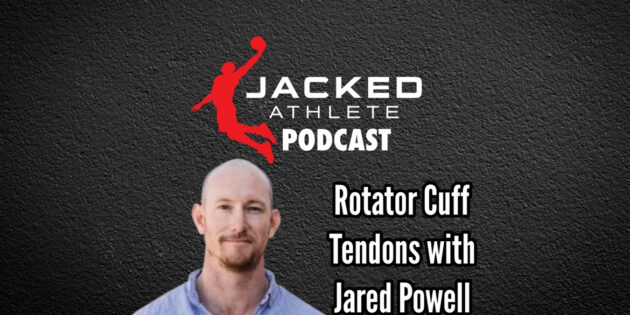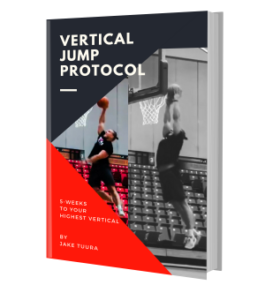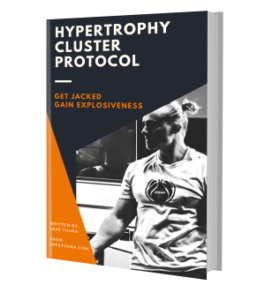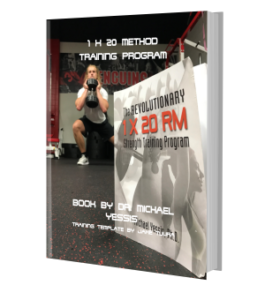https://podcasts.apple.com/us/podcast/jacked-athlete-podcast/id1462537296?i=1000702714821
“Most of the data that we have in the literature seems to suggest that 70 to 80 % of all shoulder pain presentations can be sort of housed under this umbrella term that we call rotator cuff related shoulder pain, which includes rotator cuff tendinopathy, partial thickness tears, full thickness tears, even subacromial bursitis and all these types of pathologies.”
“So shoulder impingement surgery where we’ve done sham surgeries on people with shoulder impingement. So fake surgeries on people with shoulder impingement. And those people get better equally as people who had a real authentic surgery for their shoulder impingement.”
“We basically have no real evidence that shoulder impingement is an issue that we need to dedicate much time to. It’s more about improving the capacity of the muscles and the tendons in the shoulder.”
“We find rotator cuff tears in a lot of people without pain. We find rotator cuff tendinopathy in a lot of people without pain. We find subacromial bursitis in a lot of people without pain.”
“The information that we derive from an MRI or an ultrasound scan helps very little in how we manage somebody with rotator cuff related shoulder pain and even in their diagnosis. The best, the most useful thing that we have with radiological imaging is to rule out like red flags or sinister pathology like a tumor in the shoulder or profound glenohumeral osteoarthritis or maybe a frozen shoulder or maybe something like that. And then once we’ve ruled those factors out, imaging doesn’t help us unless you have a very large, full thickness rotator cuff tear that needs a surgical procedure to heal the tear or to fix the tear. Outside of that, rotator cuff tendinopathy, a partial thickness tear, all of these findings that we find on an MRI really do not dictate or influence what we do to manage somebody with shoulder pain.”
“These [lower limb] tendons are mechanosensitive, they need mechanotransduction, they need loading, they need a stimulus. They don’t need rest and they don’t need medical management. I think a carryover into the shoulder has been our obsession with this impingement model, which is at its heart, it’s sort of medical surgical term. And so we haven’t been as good as championing like non-surgical, non-interventional exercise-based management for these conditions, but that’s changing.”
“It’s starting to be loud and clear that even people with rotator cuff tears, they must or they should trial at least a three month period of a structured progressive exercise program with appropriate advice and education before they even consider having an injection and certainly consider going down the operative path.”
“There’s basically two separate approaches for managing somebody with a rotator cuff related shoulder pain. That’s a loading or strengthening pathway or a resistance training pathway. And then there’s the other pathway, which is really popular, which is a motor control pathway. And that’s like trying to change how the scapula moves or trying to change muscle timing and activity of the trapezius or the muscles of the, know, the serratus anterior and things like that. Basically trying to optimize or improve how the shoulder moves. And these two different approaches are, they couldn’t be more different in their rationale and their mechanisms of how they may work. But when we subject these two different approaches to a clinical trial and compare them, they actually produce comparable and equivalent outcomes in terms of pain and function. So that’s a bit of a weird thing with the shoulder. There’s two different schools of thought that dominate the literature and they both produce identical outcomes in terms of pain and function.”
“Imagine somebody has a small full thickness tear or a partial thickness tear of the rotator cuff, which is different, the Achilles and the patella don’t tear much. They obviously do, but it is really common to get these little tears, what we call like holes in the blanket. You get these little like focal tears in the rotator cuff, which means the rotator cuff can still function really well, but there are these tears in the tendon, which will affect its stiffness qualities.”
“On the whole, no, rotator cuff tears don’t really heal. There is isolated evidence of healing in one to 2 % of cases, but if you were to find a rotator cuff tear on a hundred people, 50 of those will have a progression of their rotator cuff tear over the next five years, progression meaning it will get bigger in size.”
“If you would have a partial thickness tear, maybe 20 to 30 % of people will have a bigger tear if you were to check back on them in five years. If you were to have a full thickness tear, maybe 50 % or more will have an enlargement of that tear over time. It’s rare to get a healing or a filling in of that tear over time, which might be depressing for some people, but it doesn’t really matter because the rotator cuff can still function very well from a strength and function perspective, even in the presence of these tears. The rotator cuff is actually engineered in an ingenious way.”
“There’s something called the rotator cable in the rotator cuff tendon complex, which shields the areas where we get a lot of tears called the rotator crescent. So this rotator cable distributes force around the tears in the rotator cuff tendon complex so that individuals with the rotator cuff tear will not know they have a tear because they have full function. These tears are completely silent, which is what Jill refers to them as. So there is no way of knowing apart from getting a scan on these individuals that they have any pathology of their rotator cuff because evolution has done a wonderful thing for us in our shoulder and has created this cable which can disperse force around the tear so that that person can function beautifully. And I’m not just talking they can lift their arm up. We have baseball players, we have Olympic swimmers, we have high level athletes with these pathologies that are functioning at the top 0.0, 0.1 % of humanity and they’ve got no issues. So I think that’s really cool.”
“Rotator cuff pathology is typically a longer, slower brewing like cascade of degenerative pathology that will brew and take time.”
“The most common presentation of a rotator cuff pathology will be in their 50s and 60s with a degenerative rotator cuff that probably started as a slow brew tendinopathy that progressed to a partial tear that may now have a partial tear, full thickness tear, which is causing them some grief. So that’s typically the presentation that we get.”
“The swimmers are really interesting population to look at because they’re like the, I guess the runner population of the Achilles tendon… they’ve looked at them after a session and the rotator cuff tendons, particularly the supraspinatus and the subscapularis are swelling by 5 % over a session, one session. At the end of a week, these tendons are swelling by 10%. So at the end of a full training week. So there is this normal loading response in the rotator cuff tendons that we’re seeing in the Achilles as well. And so they’re responding to load normally.”
“The biggest risk factor for developing rotator cuff pathology is simply age… that tissue seems to demineralize and denaturize over time. The rotator cuff tendons have a pretty poor vascular blood supply and they just seem to degenerate over time. And it seems to be worse if you use your tendons more. And so there is an association between your dominant arm developing a rotator cuff tear versus your non-dominant arm.”
“Diabetes, metabolic syndrome, smoking, alcohol consumption, all of these things which affect our metabolic health are associated with a rotator cuff tear as well because it affects our blood flow and our healing response. If you do any of these things, anything is gonna take longer to heal. Even a skin lesion will take longer to heal. Same things that we see in our tendons as well.”
“The bigger the tear, the more likely your rotator cuff repair surgery is to fail. So there’s some data that’s come out that suggests that if you’re a 50, 60 year old person and you have a large full thickness rotator cuff tear, there’s like a 30 to 40 % chance that that tear is actually gonna heal with surgery. It’s gonna re-tear within the first year. So then what’s the point of the bloody surgery for things re-tearing in six months?”
“If I was to take an image of your opposite shoulder, there is a better than 90 % chance you’re gonna have exactly the same pathology on the other side that’s not causing you any pain.”
“How this exercise is gonna work is it’s not gonna heal your tendon, but it’s gonna make you more confident to move. It may help with some tissue turnover within the tendon, make the tendon tissue that’s still there, that’s still healthy, a bit stronger. It may increase in muscle strength. It might decrease your fear of movement in the shoulder.”
“A really easy way to get them to buy in is you get them in side lying and you do an external rotation to fatigue exercise where they get a two or a three kilogram dumbbell, they lie on their side and they do an external rotation to fatigue. They’re always gonna be weaker or do less reps on their affected side versus the unaffected side. And it usually won’t hurt them because it’s a very low intensity exercise, more of an endurance based exercise. And so they see that they’re weaker and then bang, there’s some buying to starting some exercise.”
“Tendons compress no matter where you are. Every single tendon will compress. And if your tendon is sensitive, it will be provocative. That will hurt if you compress it… you can temporarily remove yourself from that painful position, but you have to expose yourself to those positions at some point in the future, especially if you’re a younger person who wants to use your arms overhead. If you wanna get back to doing shoulder press, you have to get into that impinging position.”
Tendon compression: “You don’t even need to talk about compression. You just talk about it’s a sensitive position. It’s a sensitive movement. Let’s get out of that sensitive position before we eventually reintegrate it when it’s not so sensitive.”
“There’s no difference between allowing pain and avoiding pain. So if somebody is amenable to tolerating a moderate amount of pain during their exercise, you can let them, you don’t have to avoid pain during your rehab. So I think that’s a really liberating thing. At the same time, if somebody’s petrified and terrified and scared of pain during exercise, you don’t have to force them into it because they can still have a pretty good outcome with avoiding or temporarily moving that pain as well.”
“Shockwave doesn’t work for rotator cuff related shoulder pain, maybe unless you’ve got a calcification. So a calcific tendinopathy of the rotator cuff might be a bit more evidence. Not for me. PRP is no better than an exercise program for rotator cuff related shoulder pain. So, I mean, you can do it if you want, but it’s just no better than doing a three month exercise program. So if you want to spend $600, $800, go for it, but it’s not what I would recommend. Corticosteroid injections are a tricky one because in the short term, they are associated with a really profound reduction in pain. They can really help people. But after six weeks, typically six to eight weeks, they’re no better than if you didn’t have the injection. And then down the line, they typically get worse compared to if you didn’t have an injection in the short term. Now, what this means is often that people go and get an injection every six to 12 weeks because they have that short term effect and they wanna keep getting that short-term effect and it’s diminishing returns. That effect gets less and less and less over time. And they’re throwing all this catabolic toxic stuff into their shoulder as well, which has been associated with increased rotator cuff tear rupture down the line.”
“So the tendon doesn’t change structurally, but people get better with a loading program, which we know that strength doesn’t need to change. So force output on a dynamometer or an isokinetic machine doesn’t really need to significantly change for somebody to get out of pain or reduce their disability. We know that the scapula doesn’t need to change. So posture or motor control doesn’t need to change. The only robust mechanism so far that we have for explaining any beneficial effect of exercise for rotator cuff related shoulder pain is a reduction in fear of movement. And so that’s fascinating. So maybe it’s a psychological thing. Maybe it’s all between the ears. Maybe we’re improving confidence by moving their arm and that translates to an improvement in their pain. So I don’t want to go down that full psychological pathway. I think there is something biological and biomechanical happening. I think maybe there’s something from a biochemistry perspective happening within the tissue that we can’t see on a scan.”
“We do see when we biopsy people with a painful rotator cuff tendon versus a non painful rotator cuff tendon, the whole inflammatory biochemical environment is totally different. There’s much more upregulated inflammatory cells in a painful tendon versus a non painful tendon. So is exercise changing that biochemical environment somehow? Is it flushing out all of the substance P and the inflammatory chemicals within that tendon and promoting some sort of a healing pathway through that? Now that’s an unanswered question and we’re highly involved in researching that at the moment.”
“If you’ve got a musculoskeletal condition that manifests as difficulty moving, be it Achilles, be it patella, be it shoulder tendinopathy. And so exercise is just a such a natural treatment because it involves movement. It involves doing the thing typically that presents the pain or brings on the pain. So I find it such a powerful intervention to do because straight away you’re going to be changing that person’s experience with doing that movement. Plus you get all the beautiful secondary benefits of maybe I am changing the mechanical properties of the tendon. Maybe I am slightly increasing collagen deposition in that tendon. Maybe I am reducing blood pressure and having a cardiovascular effect as well. Maybe I am increasing muscle mass because everybody’s so chronically under trained in today’s society.”
“The better your tendon, the stiffer it is. No matter what tendon you’re investigating, you want a stiff tendon because that causes an efficient transfer of force from muscle to bone. You want that.”
Website: https://www.shoulderphysio.com
Twitter: https://x.com/JaredPowell12



